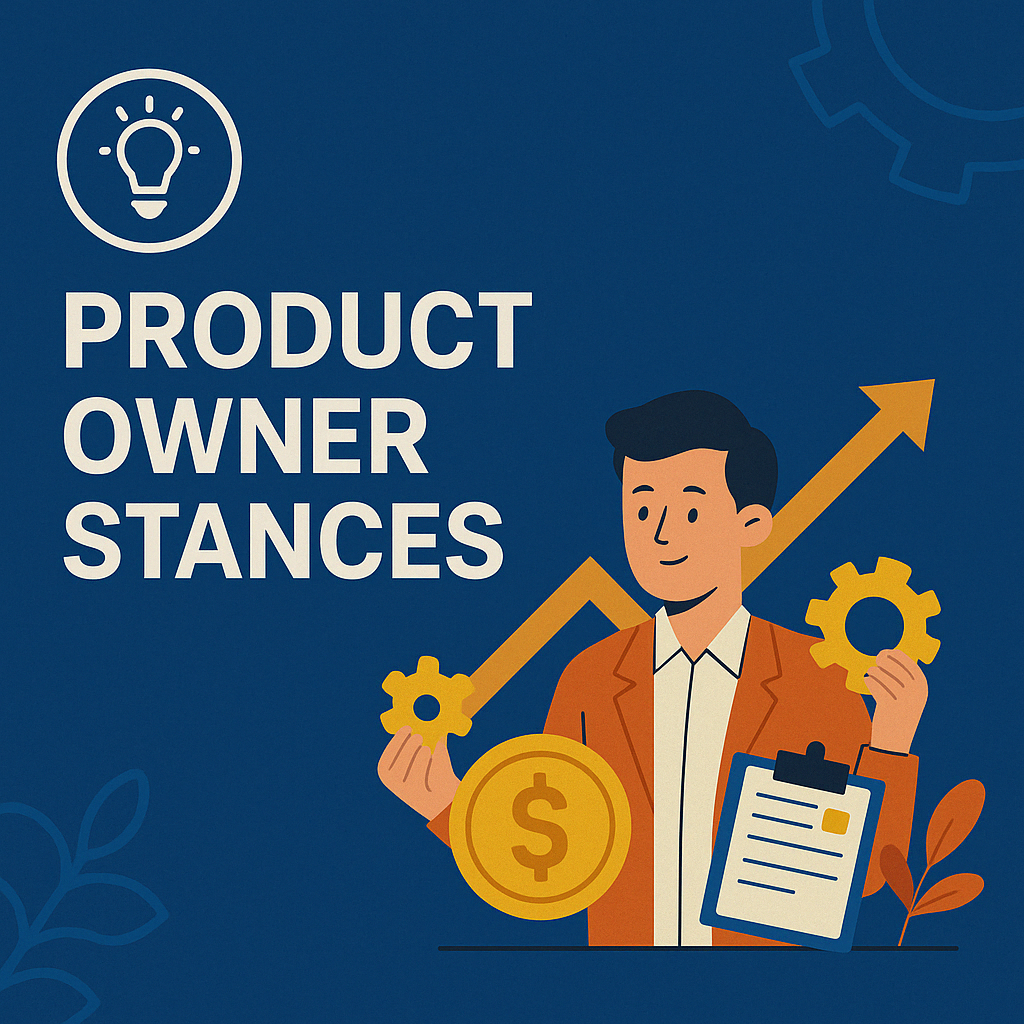In many organizations, the Product Owner role is misunderstood—and it shows. Teams get stuck, stakeholders lose trust, and products miss the mark. Often, the problem isn’t a lack of effort. It’s a lack of clarity about what great Product Ownership actually looks like.
Why these Stances Matters
The Product Owner stances aren’t just a personal style—how they are used deeply affects how much value a team delivers. Misunderstood stances often lead to bottlenecks, disengagement, or wasted effort. The preferred stances, on the other hand, enable collaboration, adaptability, and a laser focus on outcomes. As complexity increases, organizations need Product Owners with the skills, self-awareness, and leadership traits to move beyond mechanics and become strategic catalysts.
🚫 The 6 Misunderstood Stances of a Product Owner
These common traps limit the impact of Product Ownership and are often signs of organizational dysfunction:
-
- The Clerk
Just takes orders. Every request ends up on the backlog, regardless of priority or strategy.
- The Clerk
-
- The Story Writer
Over-focuses on documentation—writing detailed stories instead of fostering shared understanding.
- The Story Writer
-
- The Project Manager
Treats the team like a set of resources, tracking utilization and output rather than outcomes and impact.
- The Project Manager
-
- The Manager
Focuses on people management responsibilities like performance reviews or team morale—important, but not the Product Owner’s job.
- The Manager
-
- The Subject Matter Expert
Knows the product inside-out, but acts as the sole source of truth, limiting team learning and ownership.
- The Subject Matter Expert
-
- The Gatekeeper
Controls all communication between the team and the outside world, becoming a bottleneck and single point of failure.
- The Gatekeeper
These stances often arise from unclear expectations or legacy structures, but they prevent the team from growing and the product from evolving effectively.
✅ The 6 Preferred Stances of a Product Owner
In contrast, these stances represent high-impact Product Ownership. They enable focus, flow, and value:
-
- The Customer Representative
Builds empathy with users and champions their needs, ensuring that customer feedback directly shapes the product.
- The Customer Representative
-
- The Visionary
Sets a clear direction, articulates the “why,” and aligns everyone around a compelling Product Goal.
- The Visionary
-
- The Experimenter
Embraces learning and change, validating assumptions through small bets and fast feedback loops.
- The Experimenter
-
- The Decision Maker
Makes tough prioritization calls, owns the outcome, and provides clarity to the team by consistently saying “yes” or “no.”
- The Decision Maker
-
- The Collaborator
Works closely with Developers and stakeholders, encouraging co-creation and shared ownership of outcomes.
- The Collaborator
-
- The Influencer
Navigates complex environments, earns trust, and aligns people through relationships and persuasion—not authority.
- The Influencer
Closing Thought
Product Owners who operate in the preferred stances don’t just deliver more—they create the conditions for sustainable, meaningful progress. They unlock agility not just in process, but in mindset. As organizations grow in complexity, these stances aren’t optional—they’re essential.


